If your cakes keep sinking in the middle and you don’t know why, here are reasons why they sink and how to prevent it.
This is a common problem when baking cakes, so I’ve gathered all my tips here to help you solve this baking problem. When your cake sinks, there could be many different causes, so let’s get to why and how to keep it from happening.
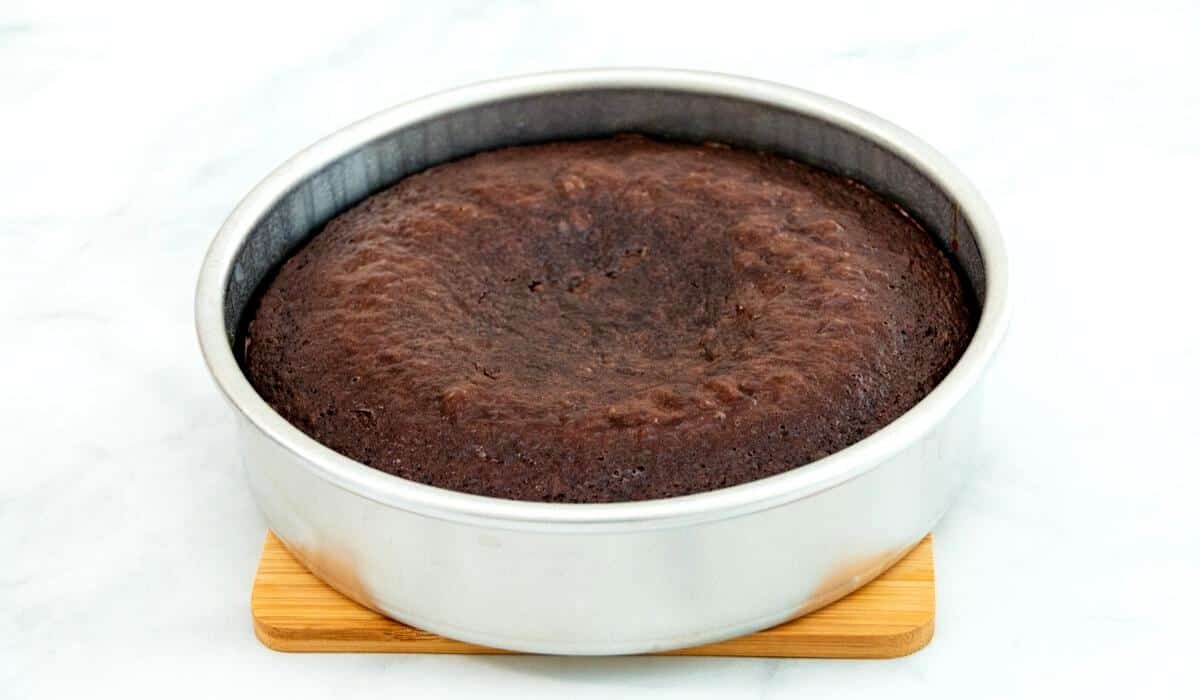
This post is packed with lots of info, about sinking cakes. I see a lot of this on Facebook. People post pics of their cakes and it’s totally sunken in the middle.
Either they don’t notice it’s a problem, they do see it’s a problem and are asking for help, or they just automatically assume it’s the recipe’s fault.
Either way, it’s a frustrating thing to happen. I mean you put in all that time and effort, not to mention all the money for the ingredients and now you’ve got a sunken cake!
Jump to:
- Opening the oven door too much or shutting it too hard:
- Adding too much leavening or just not measuring correctly:
- The moisture level is off:
- Oven temperature is too high or too low:
- It may be the altitude:
- The cake was under-baked:
- Using the wrong size cake pan:
- The mixing method was changed up:
- Waiting too long to bake the batter:
- The cake batter was over-mixed:
- More FAQs and Tips:
Now, I’m not going to call anyone out here, because I’ve had my fair share of sinking cakes. But what I will say is that 8 times out of 10, it’s not really the recipe.
Yes, it is possible that it could be the recipe, but usually, the recipe has been tested before it’s ever posted. (At least it is on my site and many other bloggers I know.)
Mistakes do happen though when testing and typing up recipes, so it is a possibility, we’re human, but I’ve found that there are a lot of instances when it might just be something else going on.
Now, that’s not to make anyone feel bad…don’t feel bad. Seriously, it’s an easy fix and I want to talk about a few things that could be causing it. And I promise if you have this problem…most everyone else has too (including me.)
There are a few things it could be, but first I want to tell you that just because it sunk, it may actually still be edible…so you don’t necessarily need to throw it out, but we’ll get to that later on.
As an Amazon Associate, I earn from qualifying purchases.
Ok, let’s get into it.
Opening the oven door too much or shutting it too hard:

Did you open the oven door too much, or slam it shut? Opening the oven door over and over will cause temperature variations.
The heat leaves the oven and then when it’s closed again, the oven has to work to bring the heat back up and then you open it right back up to check again.
On top of that, if you slam the door, or just close the oven door too hard, it could jostle the cake and that could cause it to fall as well. A jolt to the cake will pop all those nice little tiny air bubbles in the batter that’s caused it to rise.
You’ll see your cake sink pretty soon after you slam that oven door.
How to prevent that: Be super careful not to open the door very much. Try to wait until around five minutes before the cake is supposed to be done to check it. Then when you check it, be careful not to leave the oven door open long and shut it softly.
Adding too much leavening or just not measuring correctly:
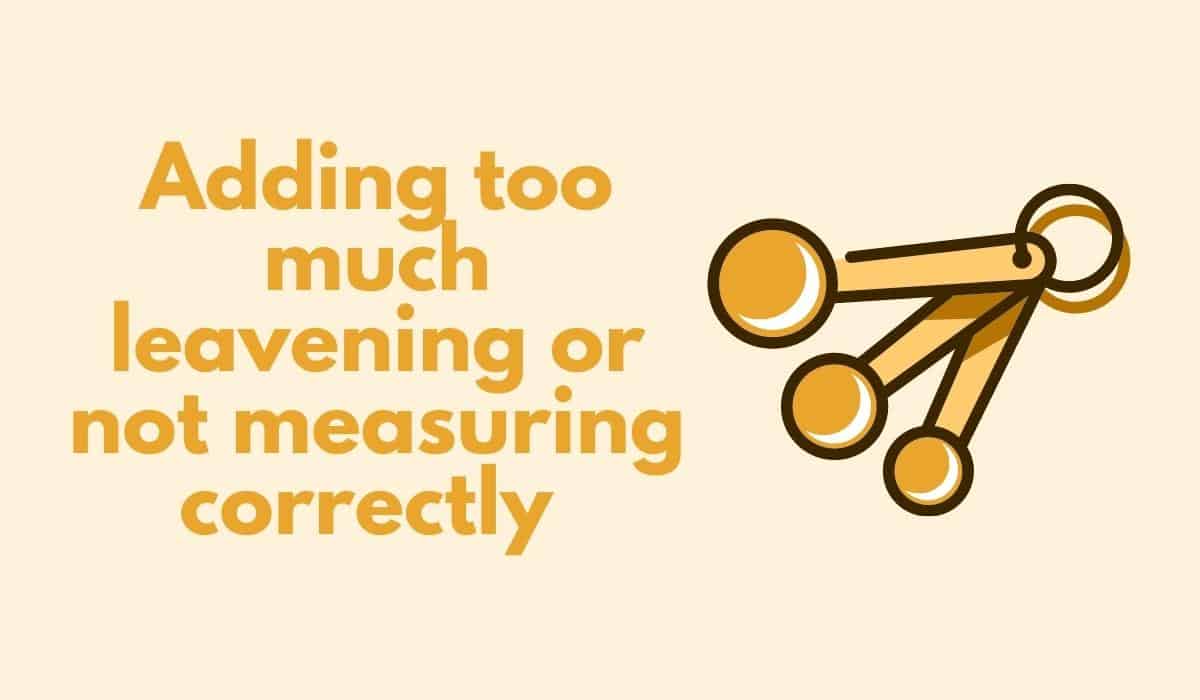
It could be that too much leavening was added (like baking powder or baking soda), so the cake rose up too quickly, then fell. The leavening agent could also have been measured wrong.
How to prevent that: Always level off your measuring spoon before adding it to the batter. You never want the baking powder or baking soda mounded up on the measuring spoon.
I’ve got lots of tips about the proper way to measure ingredients at the following link: How to Measure Ingredients for Baking Cakes
The moisture level is off:
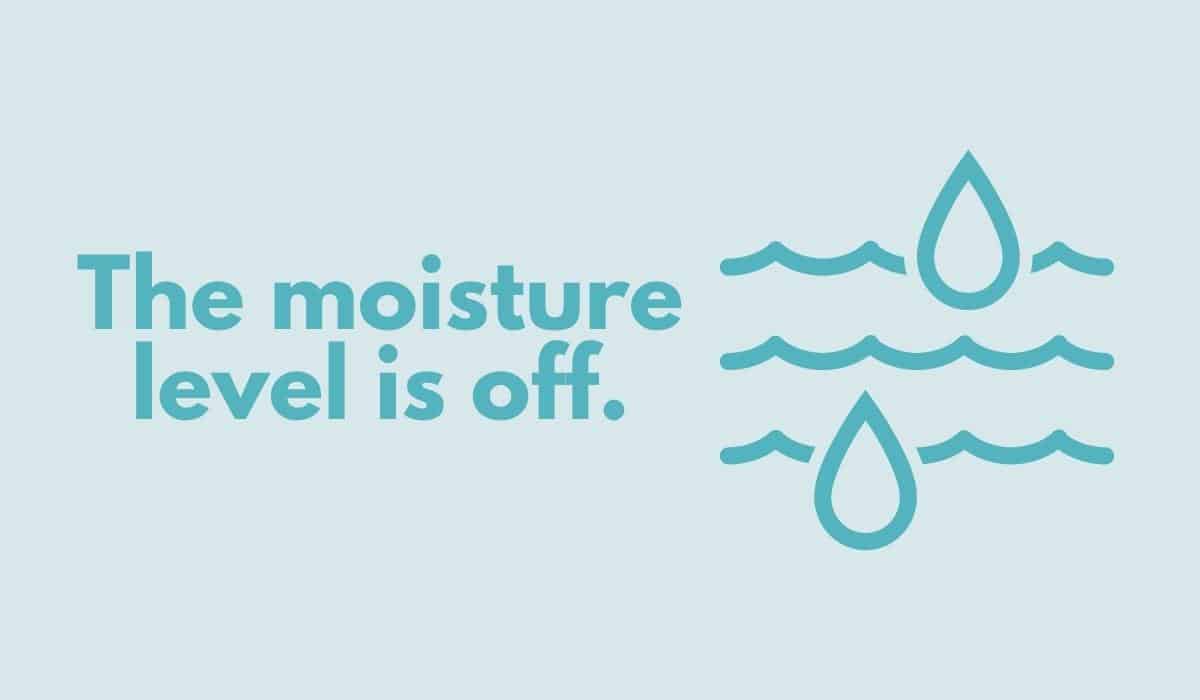
If your cake is too dry, it could possibly sink in the middle. At the same time though, you don’t want to just go adding in extra liquid, because too much liquid could really throw the ratios off and could cause the same issue.
How to prevent that: Make sure you follow the recipe exactly…at least the first time you make it. It’s important not to just add in extra liquid because you want the cake to turn out more moist. If you’ve never tried that recipe before, the cake may already be moist enough.
Always try the recipe as written first, before trying to make adjustments. Changing ingredients can easily throw off cake batter ratios.
Oven temperature is too high or too low:
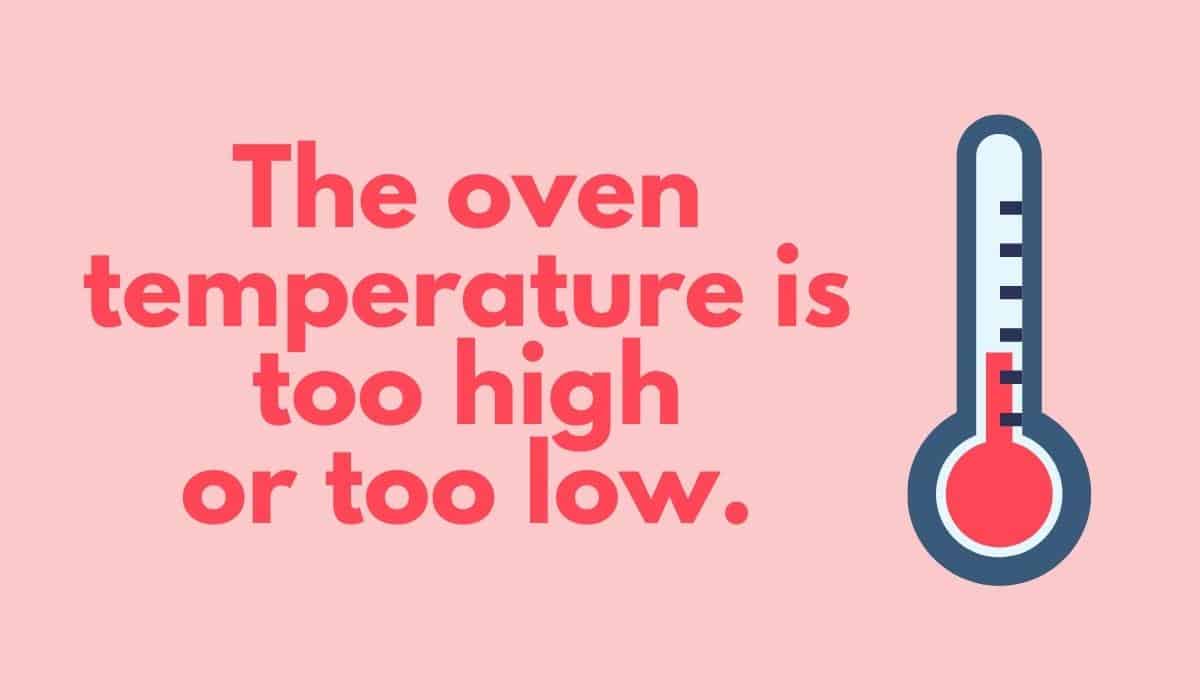
Your oven temp could be too high or low…either one. Even if you set the oven temperature correctly, your oven could be off a little.
How to prevent that: Buy an oven thermometer (like the one below) and place it in your oven. I like to test mine periodically. The temperature may be off a little, but it’s best that you know and then you can adjust for it.
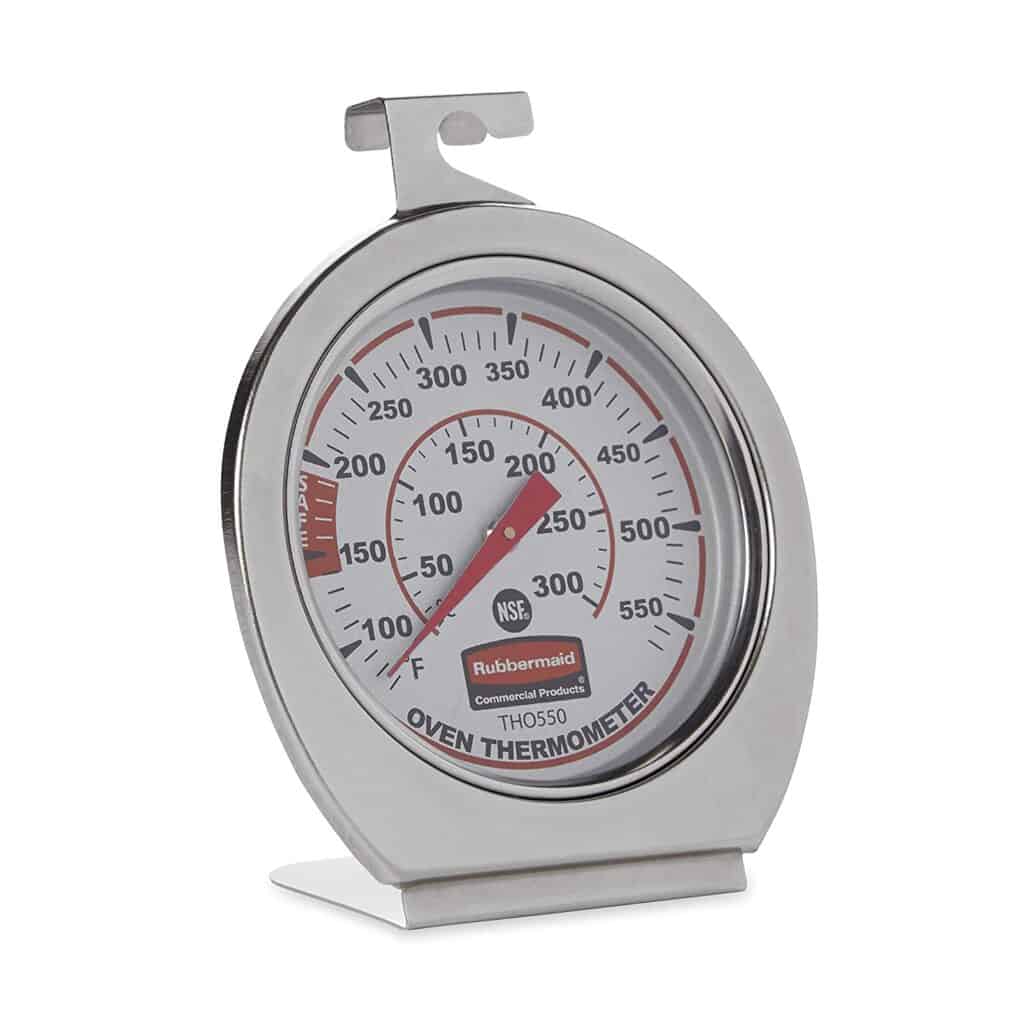
Oven Thermometer (affiliate link to oven thermometer)
Also, I know you know this, but make sure you preheat your oven. It really does make a difference.
And be super sure you’re not adjusting the temperature that the recipe tells you to bake at, as that can cause major problems. Turning up the heat to bake it faster doesn’t work.
You’ll just get a cake that’s over-browned on the outside and not quite done on the inside.
It may be the altitude:

Could it be your location? If you live in a high-altitude area, you’ll have to make some changes for your cake to bake properly.
I’m not an expert in baking at high altitudes because I’ve never had to…I’ve always lived in Texas. There’s also no real way for me to test out baking methods for high altitudes.
How to prevent that: I usually refer people to the King Arthur baking site where they suggest alterations when baking at high altitudes.
You can check that out here at the following link: King Arthur’s High Altitude Conversion Chart
The cake was under-baked:
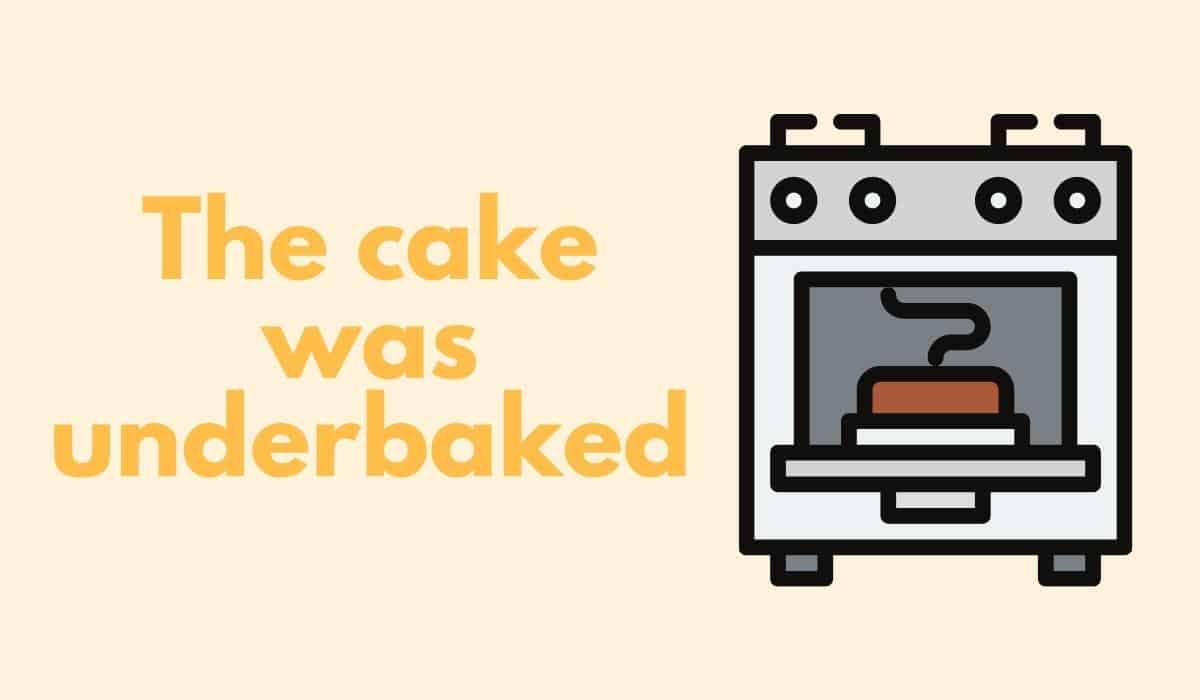
The cake may not have been baked long enough. It may have been pulled out of the oven too soon when the middle wasn’t fully baked though yet, which would cause it to fall.
I see this question a lot: Why does my cake sink after baking? Your cake might look perfect, but once you pull it out and set it on the counter, the middle sinks.
Essentially, if you pulled your cake out a little too soon and the middle wasn’t completely baked, then it could collapse on you. It’s really a fine line when baking cakes. If you bake it too long, then it dries out.
How to prevent that: I have a post all about how to know when a cake is done baking, which you can see here at the following link: How to Know When a Cake is Done Baking
Essentially, my best rule of thumb is to check a few things before pulling the cake out of the oven:
- Check that the cake is golden brown (if it’s a vanilla cake).
- Check that the sides have pulled away just a bit from the pan.
- Barely touch the top and make sure that it isn’t super soft.
- Watch if the cake is jiggly when you open the oven door.
- Use a toothpick and insert it into the middle of the cake. Pull it out and check for cake batter. You don’t have to wait until the tootpick is clean, a few moist crumbs on it is perfect. You just don’t want any raw batter on the toothpick.
Using the wrong size cake pan:
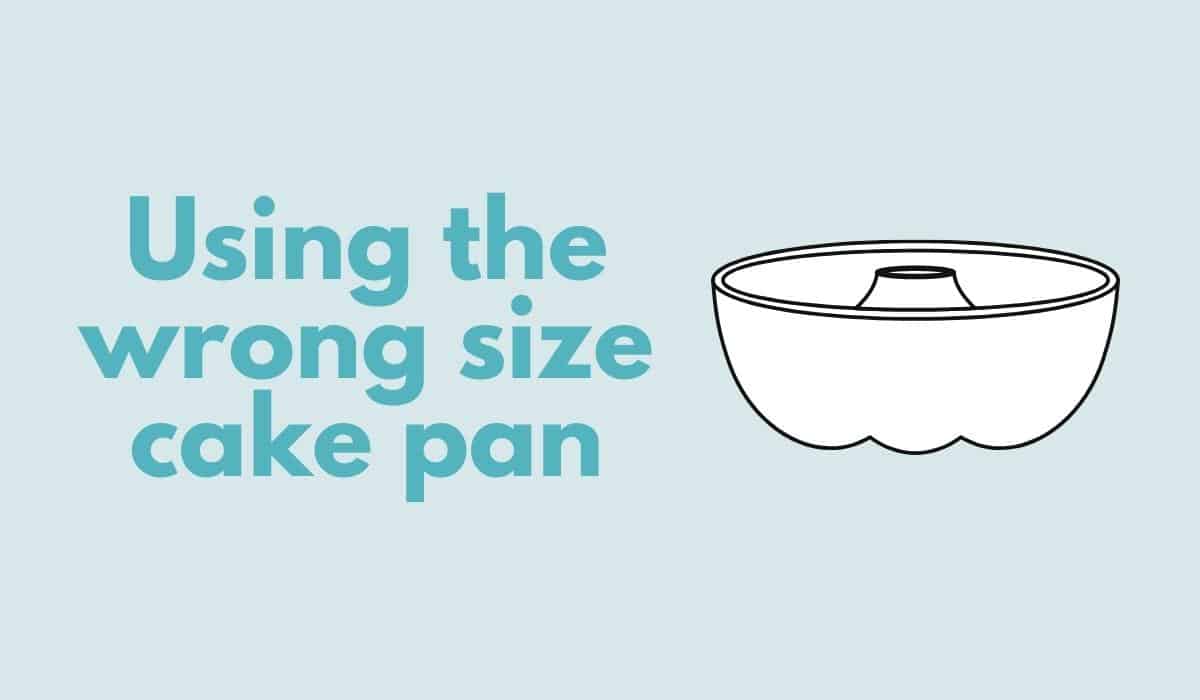
This one may not cause a sinking cake in every instance…but it could cause all kinds of other problems as well.
You really don’t want to change up the pans the recipe calls for. If you go with a bigger pan, your cake layer will be thinner and perhaps burn if you bake it as long as the recipe says.
If you go with a smaller pan, then you might need to lower the temperature a small amount and bake a little longer, so that it’s baked all the way through and doesn’t over-bake on the outside before it’s done.
How to prevent that: Try your best to use the recommended size of baking pans called for in the recipe and if you’re not sure, just ask or google it so you know if you need to make any adjustments.
I get asked questions about using different pan sizes ALL the time and I NEVER mind helping with that.
The mixing method was changed up:
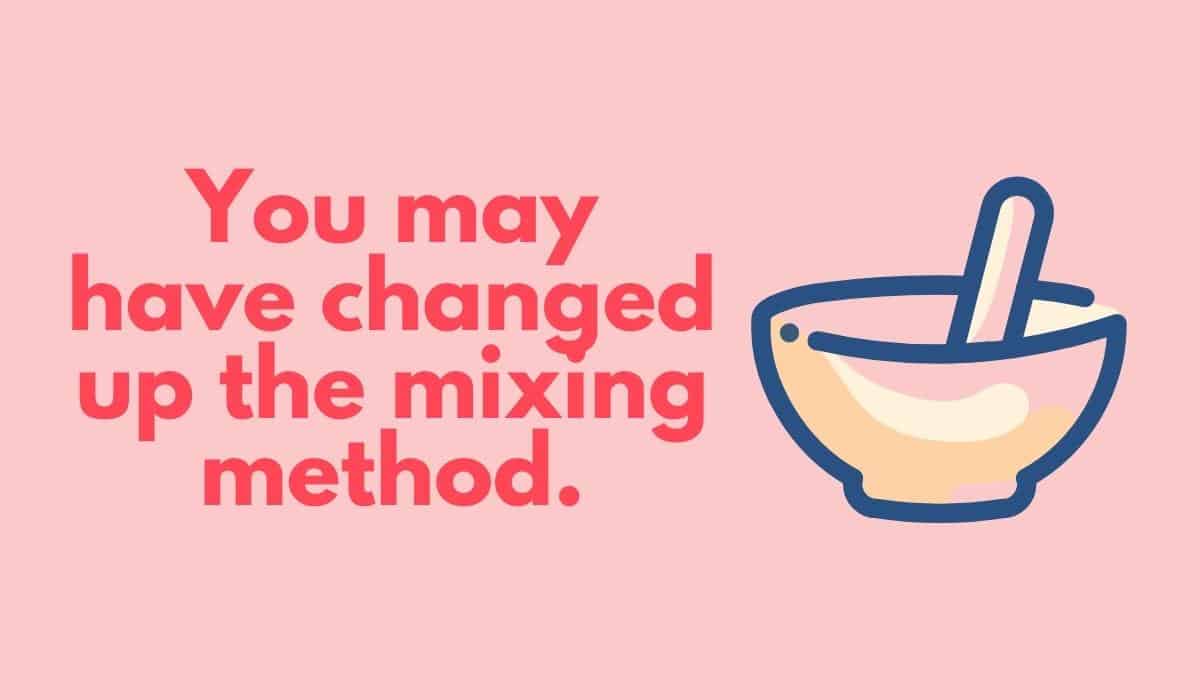
If you forgot an ingredient and just threw it in later, or maybe you didn’t think it was important to beat the butter and sugar until fluffy or made some other change to the mixing method, then you could have some texture issues and the cake could possibly sink.
Mixing methods actually do matter. Some, like the creaming method, require the butter and sugar to be whipped up first in order to incorporate more air which helps the cake rise.
Other methods are used to help a cake texture come out soft and tender.
There are reasons behind different methods. If you want more details on that, I have a post all about it at the following link: Types of Flour for Cakes and Mixing Methods
How to prevent that: Make sure you’re following the mixing method written in the cake recipe. For most cakes, it really does matter how it’s mixed.
Waiting too long to bake the batter:
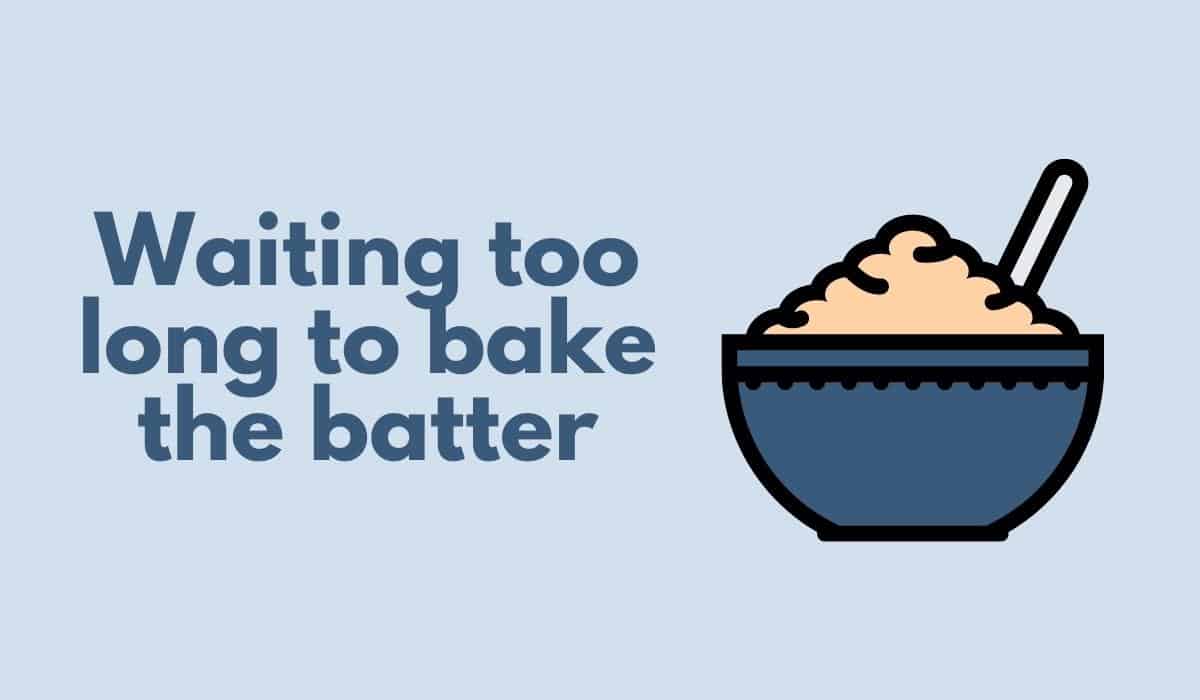
This becomes an issue mainly when you’re using a recipe with baking soda because it’s not really double-acting. (More on that at the link below).
If you don’t bake the cake batter pretty soon after mixing it up, then you could have issues with it rising correctly because the chemical reaction from the leavening ingredients has already started well before you actually bake the cake.
So, if you hold off baking mixed cake batter, it may not rise properly and may turn out dense, which could cause the middle to sink in.
How to prevent that: It’s always best to bake cake batter soon after it’s been mixed. If you absolutely can’t, then I’d suggest using a recipe that doesn’t call for baking soda as that’s not double acting and the boost you’d get from it, will be long gone by the time you bake it.
I go into a ton of details and experiment with how long cake batter lasts in this post and video at the following link: How Long Does Cake Batter Last?
The cake batter was over-mixed:
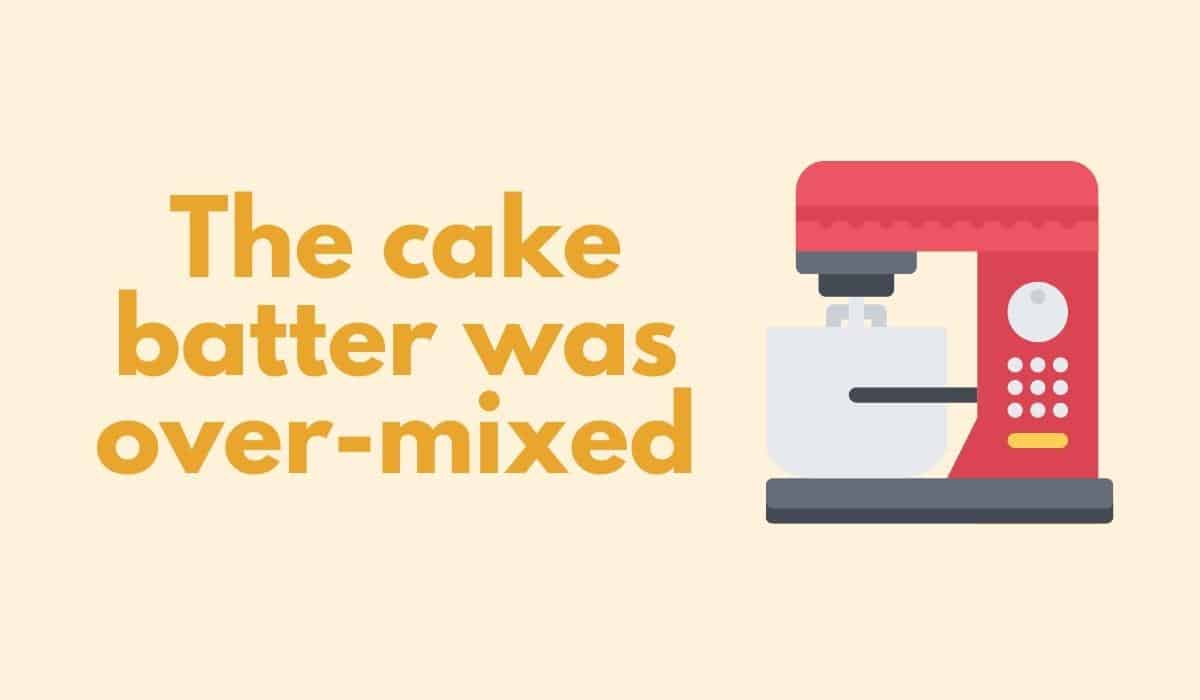
Now we’re getting real here: The BIGGEST, most common problem I see is over mixing the batter. This can cause all sorts of cake texture issues.
How to prevent that: First, you always want to follow the recipe exactly as each cake has a different mixing method and should instruct on how long to mix the batter.
For most scratch cakes, unless otherwise noted in the recipe, you want to stop mixing once the ingredients are well combined. Many people beat cake batter for several minutes and try to get it ultra super smooth. That’s fine for cake box mixes, but it will really mess up a scratch cake.
Mixing cake batter too long will cause the cake to become dense, rubbery and could cause it to fall.
The most important thing you can do is to stop mixing once all the ingredients are just well combined.
I have a post that goes into more details AND it’s even got a video on how long to mix cake batter in real-time. I don’t speed it up…that way you can see exactly what I’m talking about.
You can see that post with video at the following link: How to Mix Cake Batter

More FAQs and Tips:
A sunken cake may still be edible. First, check to see if the cake is baked all the way through. Second, check the cake’s texture. Cut a piece or a small area and try it. The texture may be too spongy or rubbery and dense. Third, check the taste. This is obvious, but if an ingredient was missed or if too much baking soda was added, it may not have a good taste.
Once all these things are determined, if the cake texture is good, it’s baked all the way through and it tastes good, then you’re good to go.
First, you’ll want to determine if it’s still edible. You can see how to do that in the first FAQ here. If it’s not edible, then you’ll have to discard it. You don’t want anyone getting sick from eating an underbaked cake.
If it’s still edible, you can just take a cake leveler (or a knife) and level off the top area that is sunken in. You can add frosting or a glaze to the top and serve. You’ll have a much thinner cake layer to work with, but at least you’ll get to enjoy some of it!
If it really looks too thin to serve that way, but it’s still edible, you could always crumble it up and make it into cake pops, cake balls, or cake popsicles. You could also cube it up and use it to make a trifle.
Many times, this happens because the cake was underbaked. In general, a cake will shrink some once it’s taken out of the oven, but if it shrinks too much, then there was a problem with either the mixing method, the ingredients added, or many times it was just taken out of the oven too soon.
I hope this post was helpful to you. Let me know if you’re still having trouble with sinking cakes and I’ll help you brainstorm what could be happening!
Links to other posts you might like:
Don’t forget to pin it below!

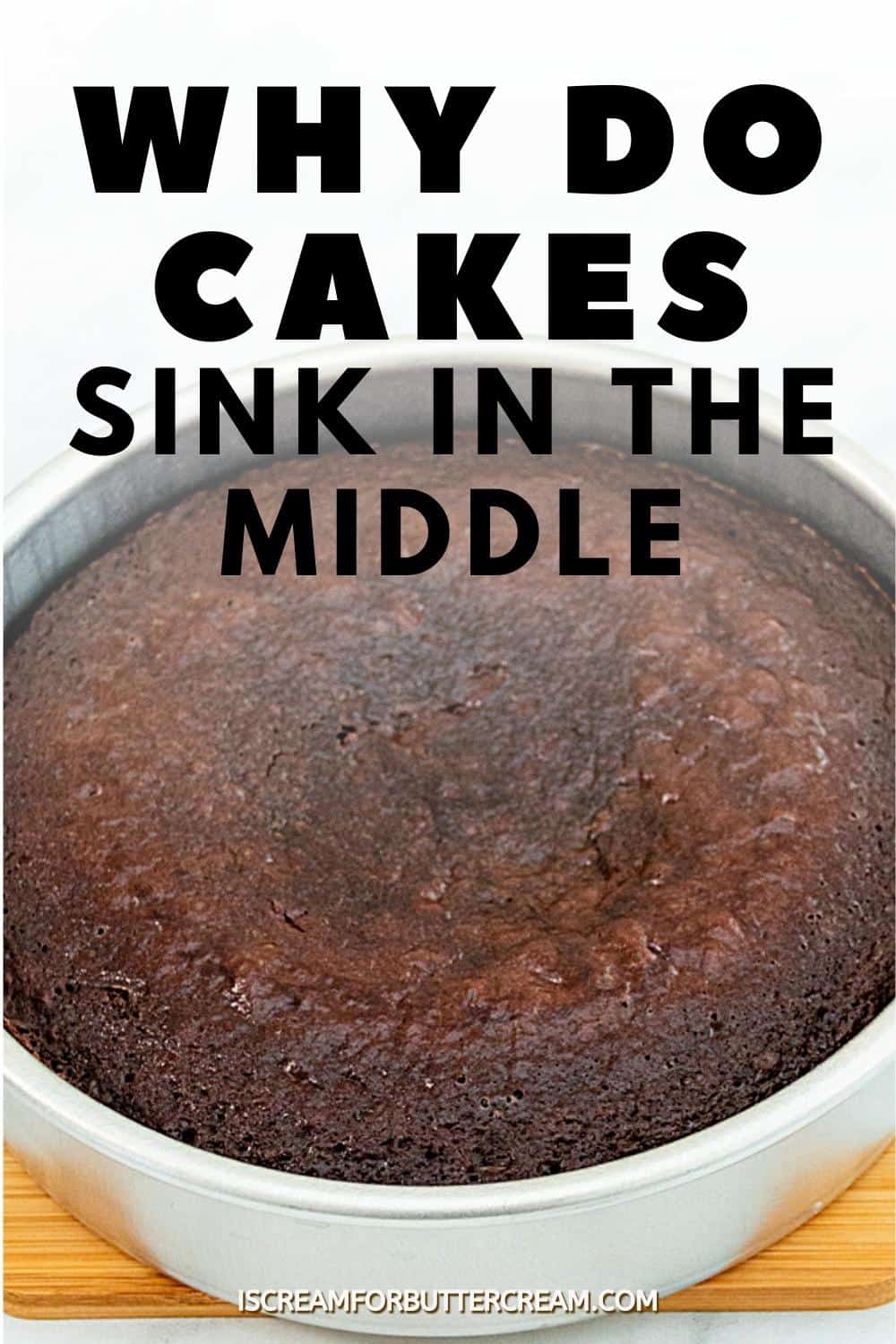
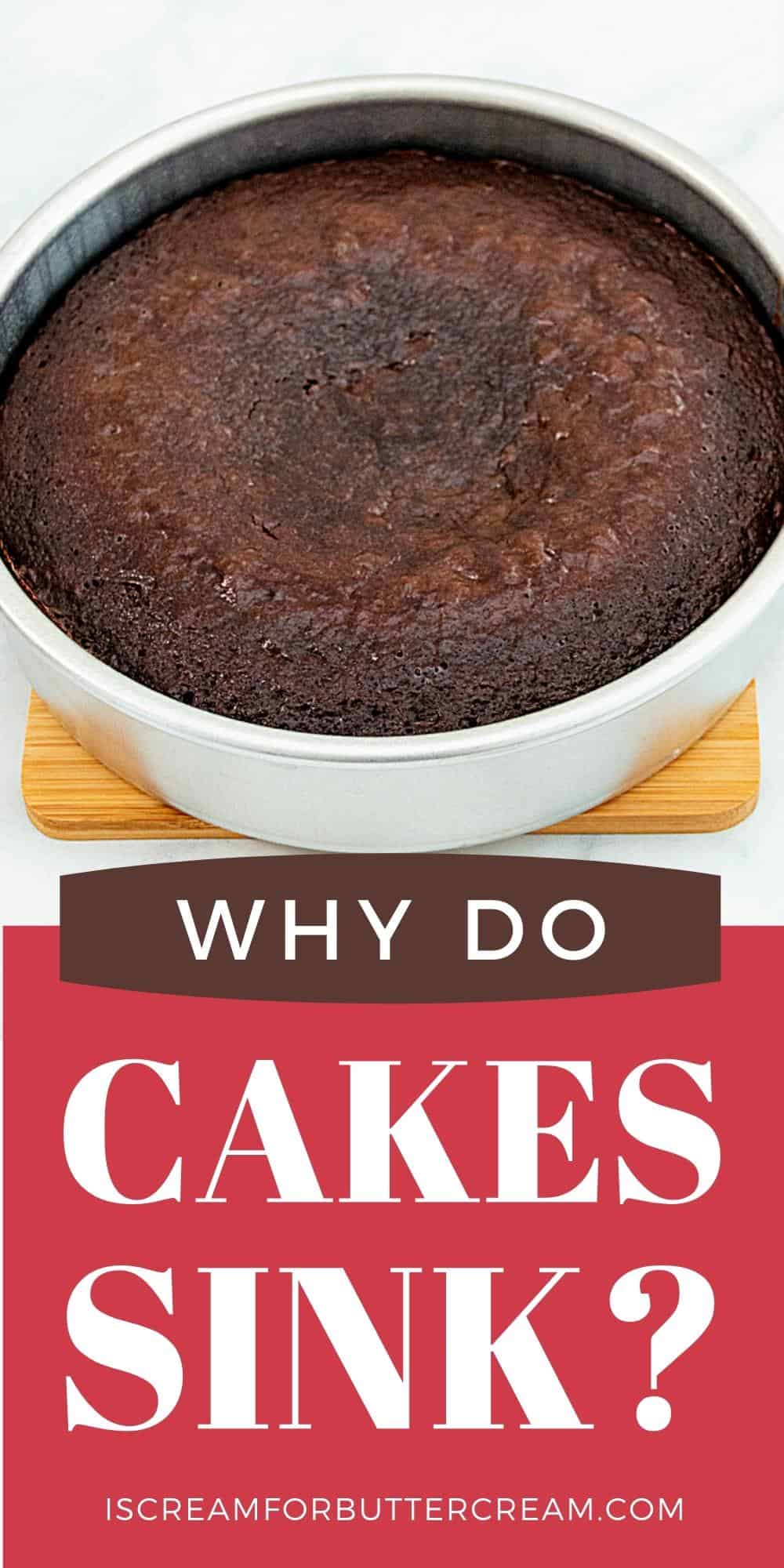
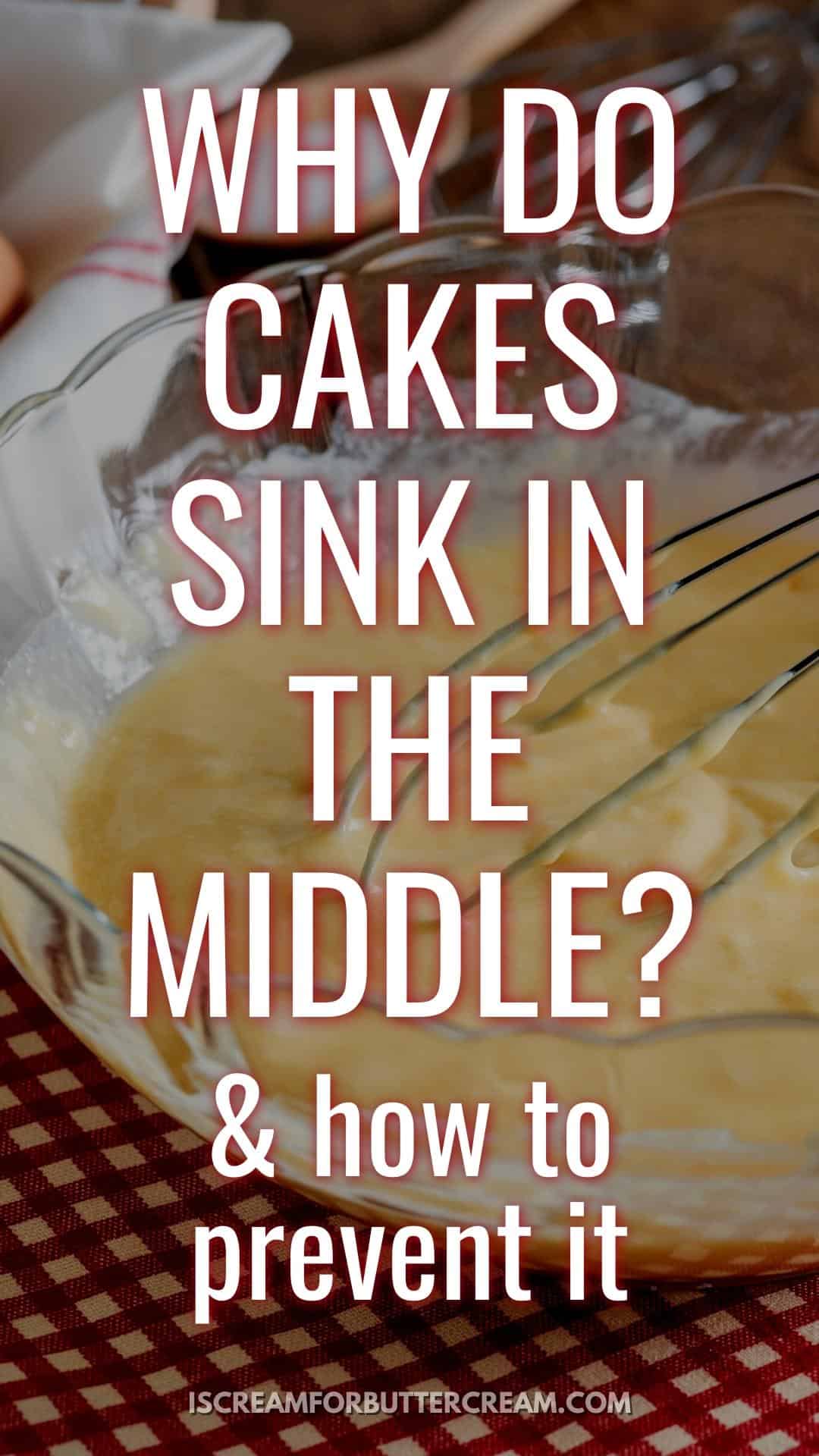
Iffy
Thank you so much for all the answers.so helpful.
Kara Jane
So glad it helped!
Lili
That was such an informative post! Thank you!!